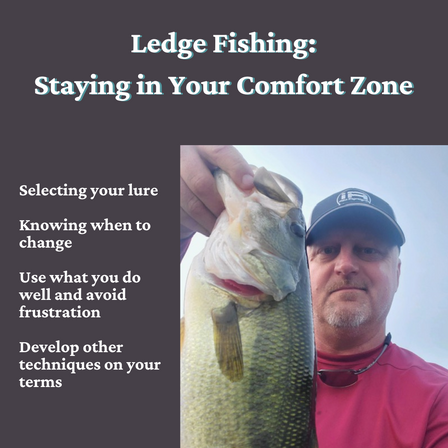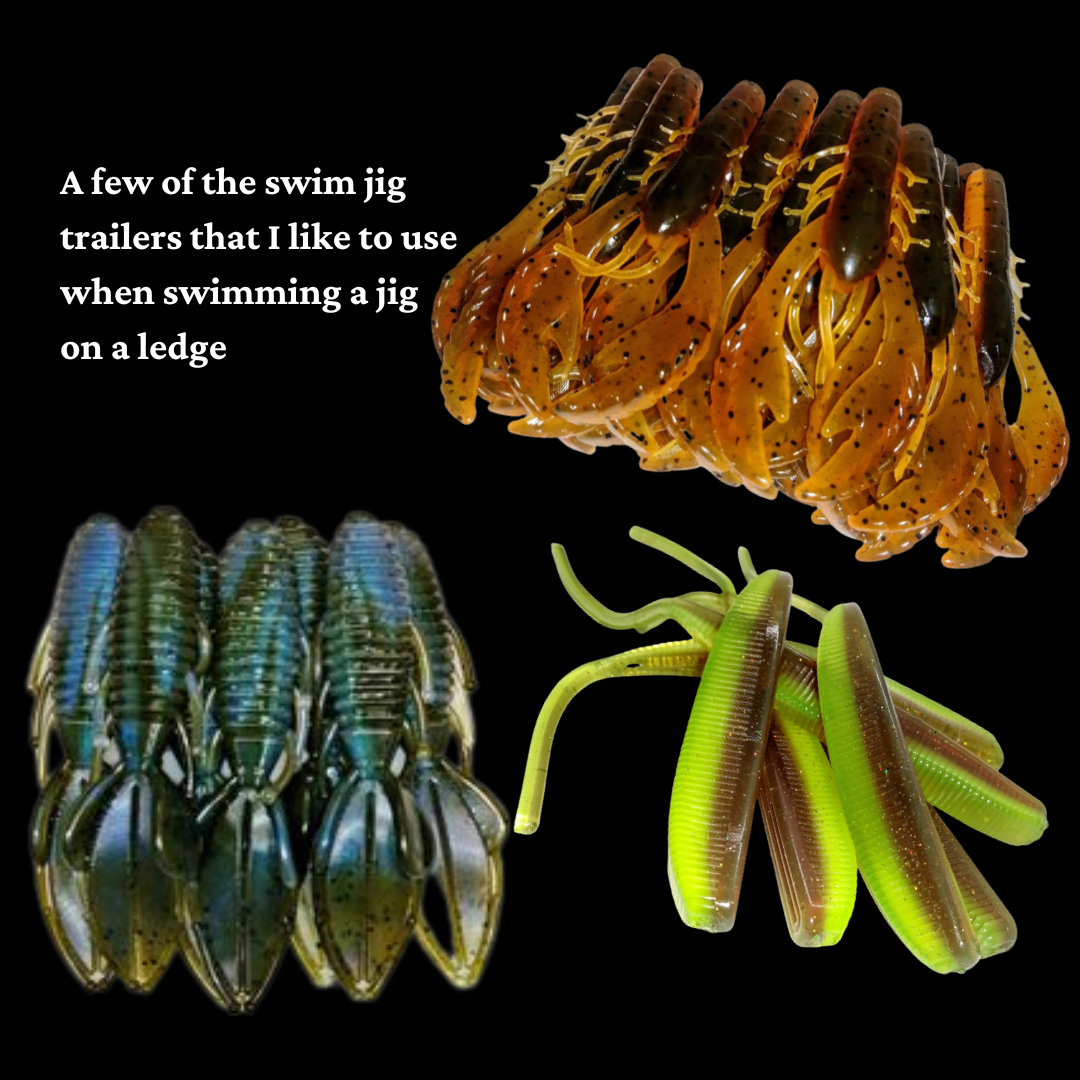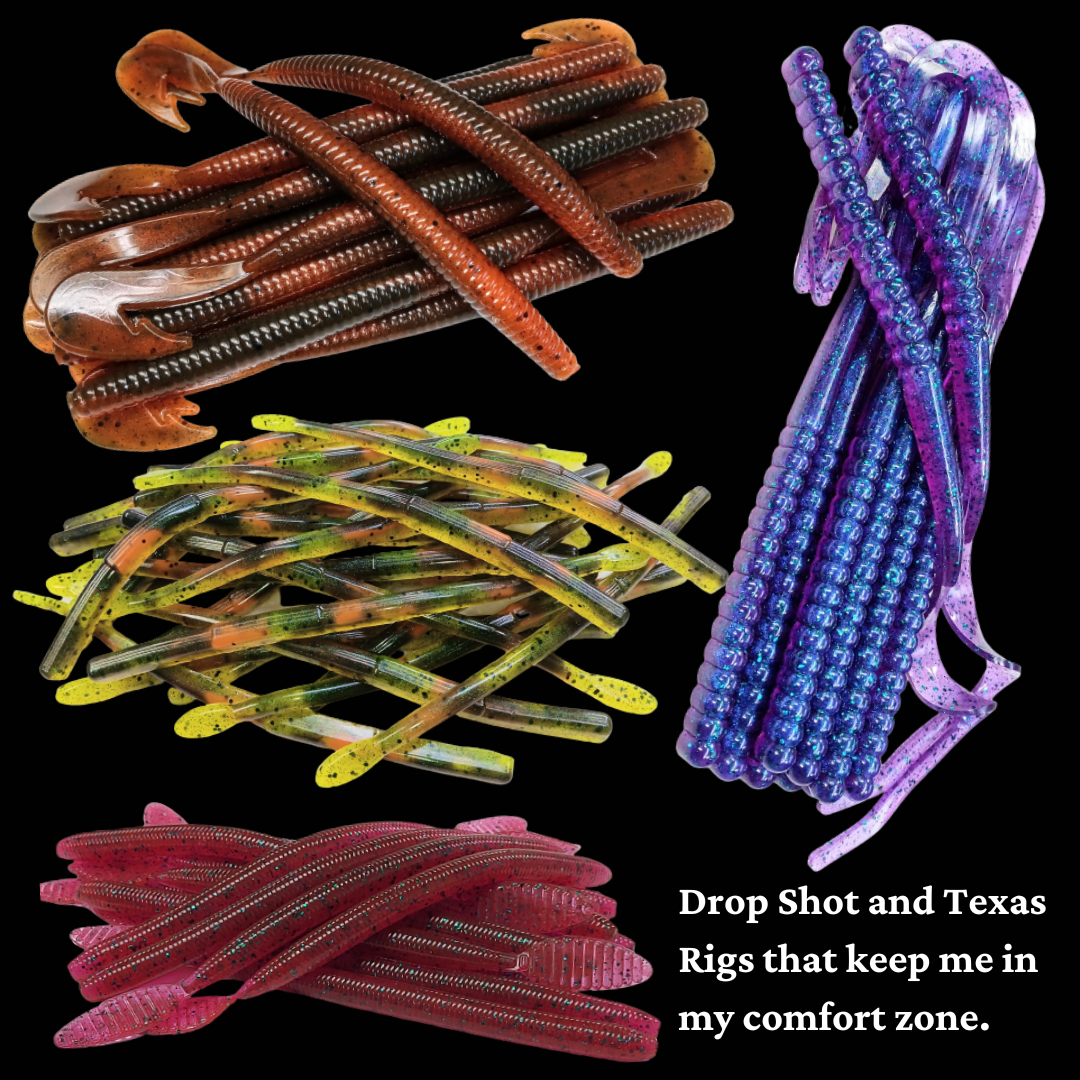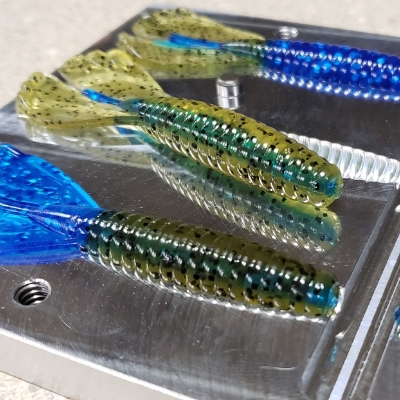Ledge Fishing: Staying in Your Comfort Zone
By Angling Ai on 8th Aug 2023

Ledge Fishing is one of the oldest techniques in fishing, in fact, it is generational. The techniques secrets seem to be closely guarded through the years but catching quality fish all summer and early seems to make ledge fishing a must. Anglers can easily be frustrated when ledge fishing and then just move on to another technique, leaving behind some quality fish and some very productive days on the water. One thing for sure is that fishing is about confidence and you need to stay in your comfort zone to help avoid frustration.
Different Philosophies and Tactics Give Anglers Choices
Developing your philosophy will always include your experiences. Knowing where the bait is staying will always be where the predator fish are. Ledges that have current, structure, and shallow areas nearby seem to have an abundance of fish. After picking your ledge and marking your fish deciding how to setup on the ledge two basic philosophies exist. One, throw big baits and see if the bigger fish are active, or two, throw smaller baits and get the fish active and create competition. This is great because there is no true right or wrong. If your first choice does not bring success you can switch tactics. The differences in philosophy can be confusing to anglers as well as how to plan the ledge to fish and how to present your lures. I usually pull from similar experiences and consider weather patterns, time of year, water color, water temperature, and the lake I am on when making my choices. I always start with choices that I am comfortable with first, avoiding getting frustrated by things I have not done. I can pick other days and plan when I want to try something new to gain experience and avoid getting frustrated.
What to Cast Out First
In ledge fishing the first thing to throw has always been crankbaits traditionally. This tactic is not disputed, but since larger soft plastic swimbaits have developed there are now options. I personally like to throw soft plastic swimbaits over crankbaits since I have a lot of confidence in them for several reasons.
- I make my own
- I can create my own pattern
- Can be rigged weedless and modified
- They are more in my comfort zone

I then choose to follow the typical ledge fishing pattern making 12-15 casts hoping to draw a quality bite. Conditions may determine if I am throwing a 7-inch swimbait or a 5-inch swimbait, but I am throwing a swimbait. I can adjust my retrieve within those casts if needed. If I chose to present a smaller bait and the school is active I will catch a few while being alert to the fish being caught not remove too many fish from the school. Bigger fish will move on if to many fish are removed from the school. If I have no success is found in 12-15 casts it is time to switch what is being presented.
Time to Use the Swim Jig
Swim Jigs are the next thing that most ledge fishermen want to present. I will use the jig but I am quick to add a trailer to the presentation. It just gives the jig a little more action and I believe it helps. Adding a craw, stinger tail, smaller swimbait, or creature bait is a confidence builder for me. Depending on how the fish are staged helps me choose which trailer I want to add. Following the same technique with the swim jig as the swimbaits is pretty common. Make 12-15 casts and gauge your results, if no bite occurs it is time to switch lures again.

Stay in Your Comfort Zone
The next step in ledge fishing is to try and use a finesse pattern to get the fish active. Anglers are often frustrated by now trying to live on the ledge. So many techniques to try can cause confusion. Which technique to choose Texas rig, split shot, Carolina rig, neko rig, Ned rig, or drop shot? Remember if you have not practiced a technique now is probably not the time to try one. Trying a technique that has worked well for others and you have never really used can be really disheartening. At this point, I like to stay in my comfort zone. I will use the two techniques I am best at and really have confidence in my ability. I like to drop shot and Texas rig larger worms. Texas rigging is large worms with lighter weights that will get deep but suspend longer in front of inactive fish. Using 10-inch curl tails and larger trick work worms is what I like around structure working down a ledge. This sometimes can get that school fired up and feeding. When the fish a closer to the bottom of the lake holding tight to the ledge or right at the bottom drop shoting is in my comfort zone. I can work 6-inch drop shots and 4-5 inch minnows or shad profiles tight to the bottom and stay in the strike zone. Staying within a comfort level really helps with the anxiety of not getting on a bite right away and avoiding the feeling of trying to learn something that I do not know well. If I planned in my head for it to be a learning day, yes I will practice a technique outside of my zone. However, if I need to get on a few fish I will stay in my comfort zone.

Deciding for Yourself
Fishing is great because you can get what you want to experience out of it. You get to choose how and what you want to fish. Increasing your chance of catching quality fish is what it is all about. If Texas Rigging is not where you are comfortable that is ok, that is the point. Pick lures and techniques that increase your odds of being on fish and drawing a strike. Stay in your comfort zone and have a more productive day on the water. Let us know what has worked for you and your opinion.



